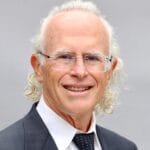
Last month’s peer-reviewed study in the Journal of the American Geriatrics Society found that 36.1% of nursing homes did not report any medical director hours in the Payroll Based Journal.
If this data is accurate, more than one-third of the nation’s roughly 15,000 Medicare certified nursing homes are not complying with the OBRA ’87 law that mandates that each nursing home have a medical director.
Do we believe that these nursing homes don’t have a medical director at all? Of course not. But the data (or its glaring absence) cannot be ignored. That’s why we are now writing our personal opinions about what the missing data means. Whether the number is accurate isn’t the point. What truly matters is if anyone, from the public to the nursing home industry, to policymakers, is invested in the person serving as the medical director.
The Post-Acute and Long-Term Care Medical Association (PALTmed, formerly AMDA) has spent years trying to educate all stakeholders about this vital role.
Its certifying board, the American Board of Post-Acute and Long-Term Care Medicine (ABPLM) established the Certified Medical Directors (CMD) credential many years ago. Since then, their work has been validated, showing that CMDs improve care in nursing facilities. Other studies show that these vital positions can reduce unnecessary rehospitalizations and improve vaccination rates.
We believe that the inaccurate medical director data entered by many nursing homes reflects the importance they attach to these positions. Our good friend Karl Steinberg, MD, CMD, HMDC, likes to talk about facilities that hire medical directors for the “3 S’s:” Sit down, Shut up and Sign.
If this study demonstrated anything, it’s that many nursing homes don’t take the role of their medical director seriously enough to enter accurate data into the PBJ.
Several states also have done their part to try to improve the competency of the people serving in these roles. In 2000, Maryland enacted a law that required that all Maryland nursing home medical directors receive education. Just three years ago, California mandated having a certified medical director in every nursing home.
To date, while nearly half of California’s nursing homes have not reported having a certified medical director or even a medical director on the path to certification, we are unaware of any deficiencies being cited, and in Maryland, there has been little oversight or enforcement of the education requirement.
Having worked in nursing homes for over three decades, we hear from many colleagues who complain that they are not utilized for their expertise as medical directors. If the nursing home industry and the state survey agencies don’t prioritize the importance of these long-term care professionals, who will?
For years, PALTmed has advocated for transparency about the person serving in this role, with the most common-sense solution being an up-to-date listing of all nursing home medical directors.
The Centers for Medicare & Medicaid Services finally put this requirement in last year’s transparency final rule. In the rule, CMS acknowledged that medical directors serve a vital role and stated that the agency always believed that medical directors serve in a leadership role in the facility.
Likewise, the recent staffing final rule put forth by CMS also spells out their important role in coordinating medical care and being an active participant in the facility assessment process. Medical directors with the necessary expertise in geriatrics and long-term care medicine have a unique and vital role in achieving quality care in nursing homes.
By ignoring the role of the medical director, nursing home operators risk making decisions that put residents in harm’s way, and regulators often miss opportunities to take advantage of on-site clinical expertise that can improve the quality of care. These professionals have the highest level of clinical training and expertise in post-acute and long-term care settings (PALTC), and it is befuddling to see that expertise go untapped.
The JAGS study is a call to action. Five years ago, one of us wrote about the importance of competent and engaged medical directors. Three years ago, the late Steven Levenson, MD, CMD, wrote about “The Promise of Nursing Home Medical Direction: A Work in Progress.” We can honor his memory and commitment to this important issue by pressuring both the nursing home industry and the regulators to highlight the critical importance of having competent and engaged medical directors in our nation’s nursing homes.
Their expertise and influence should extend well beyond the implementation of policies and care coordination. In a new PALTC world marked by the adoption of value-based care models and person-centered, goal-concordant care delivery, our residents and staff deserve competent and compassionate medical directors whose expertise has been proven to significantly increase the quality of care.
Michael Wasserman, MD, CMD, is a geriatrician and member of the Post-Acute and Long-Term Care Medical Association (PALTmed) Board of Directors.
Rajeev Kumar, MD, CMD, FACP, is a geriatrician and president of PALTmed.
The opinions expressed in McKnight’s Long-Term Care News guest submissions are the author’s and are not necessarily those of McKnight’s Long-Term Care News or its editors.
Have a column idea? See our submission guidelines here.





